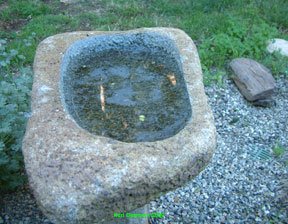The “Day Fire,” which began on Labor Day and grew to be one of the largest wildfires in Southern California history, continues to smolder. Over 200,000 acres have burned, much of it in the Los Padres National Forest. NASA photo from space.
Sunday, another white-crowned sparrow arrived. After gobbling down some food, the tiny wanderer hopped into the bird bath and scrubbed. When it was done, a scum of ash floated on the water.

The white-crowned sparrows, migrating south, seem to be traveling through the ash cloud and/or the charred hillsides of the Day Fire. Perhaps that is why we are seeing individuals and not the family groups that typically arrive together. The fire has added to the rigors of their migration.
Fire greatly alters the terrain. Roads and access to much of Los Padres National Forest remain restricted because of continuing fire danger and possible landslides. Even before the rains arrive, landslides threaten water drainage and habitat for invertebrates, amphibians and fish.
Few structures were consumed in the “Day Fire” due to the tireless efforts of firefighters, but the home range of many plants and the foraging area of countless animals have been greatly altered.
Interestingly, the arriving warblers, a Townsend’s and numerous yellow-rumped, are clean. They must be traveling a different route, possibly along the coast.
What a challenge it must be for a small migratory bird to travel countless miles with hopes of stopping in the wilderness of Los Padres Forest, only to find the streams are clouded with dirt and ash, the plants and insects are gone, and the oasis they planned on is a charred landscape. How many perish unable to continue their journey?
The juncos and the hermit thrush have yet to arrive. I can’t help but wonder if the fire will have an effect on them?
No comments:
Post a Comment